A Billion Years In Interstellar Space: What We Know Today About ‘Oumuamua
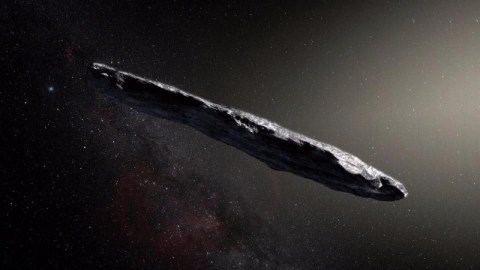
This is what we’ve learned from first object ever discovered to enter our Solar System from interstellar space.
Billions of years ago, our Solar System was an extraordinarily different place from what we know today. Earth had no multicellular lifeforms on it: no plants, no animals, no sexual reproduction. Saturn didn’t yet have its rings, as the collision that destroyed one of its giant moons had not yet occurred. And the asteroid belt was much richer than it is today, full of rocky bodies that have long since been gravitationally ejected into interstellar space.
Every Solar System, if we understand how they form correctly, has a similar story. Small, rocky bodies — as well as the ice-dominated ones farther out — will get gravitationally kicked around by the planets and other objects around them. Many of these objects will get ejected, traveling through the galaxy until they randomly enter the vicinity of another, alien solar system. In 2017, for the first time, we detected an object passing through our Solar System that must have originated outside of it: interstellar interloper ‘Oumuamua. Here’s what we know about it today.
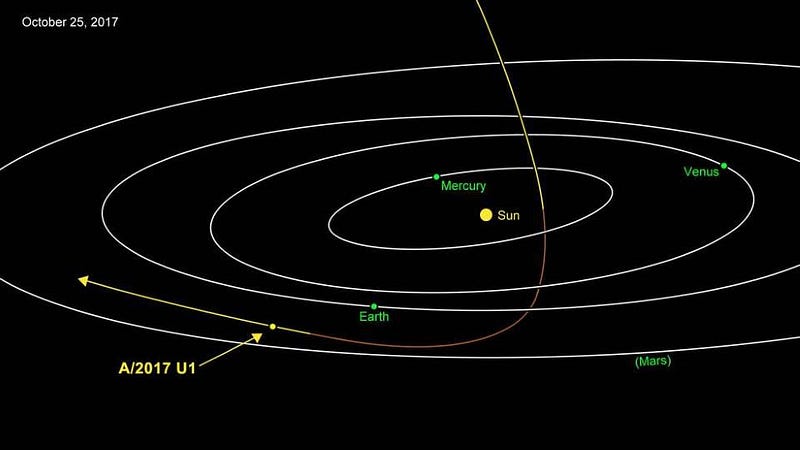
The Hawaiian name ‘Oumuamua is extraordinarily evocative, translating as “a scout or messenger from the distant past.” When we saw this object passing through our Solar System, it jumped out as being unlike anything else. Every object that we’ve ever found has an orbit with respect to our Sun. The four options are:
- circular, with an eccentricity of 0,
- elliptical, with an eccentricity between 0 and 1,
- parabolic, with an eccentricity of exactly 1,
- or hyperbolic, with an eccentricity greater than 1.
We’ve found objects in all four classes, with the hyperbolic objects corresponding to comets that were gravitationally kicked in such a way that they’ll exit the Solar System. They have eccentricities very slightly greater than 1, with values like 1.0001 or so.
But when we first found ‘Oumuamua, we recognized it was something special. Unlike everything else we’ve ever found, its eccentricity was 1.2.
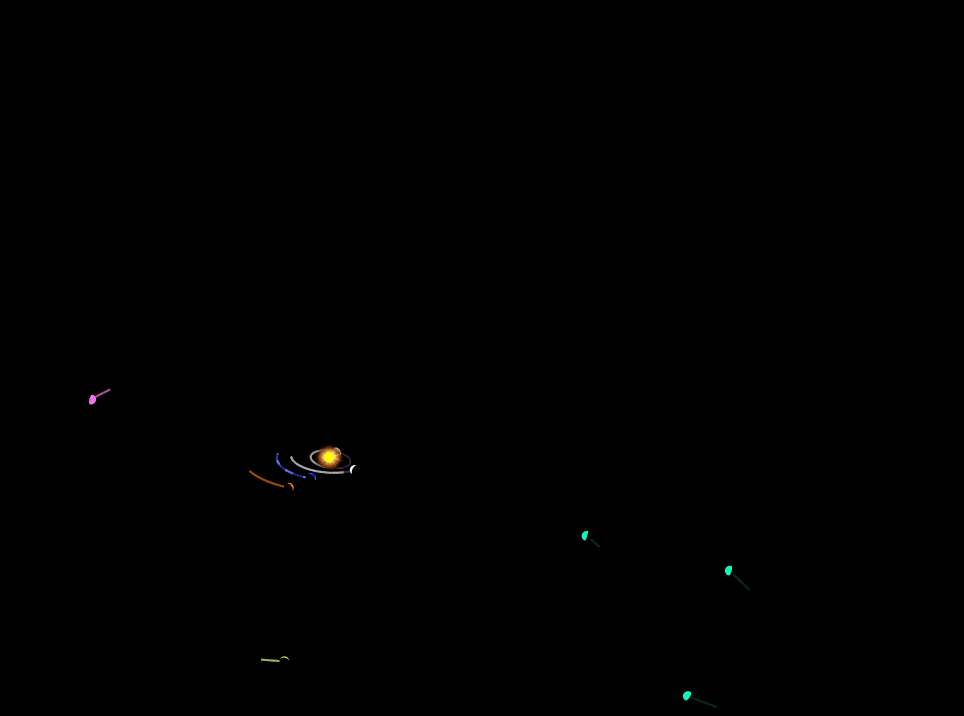
Another way to understand why it was so extraordinary is to look at its speed on its way out of the Solar System.
If you were a Kuiper belt object that interacted with another massive world out beyond Neptune, or got perturbed by Neptune itself, you could gravitationally unbind it from our Solar System, giving it a hyperbolic orbit. But its maximum speed, upon exiting the Solar System, would be on the order of ~1 km/s. Same deal for an asteroid perturbed by Jupiter: it could reach speeds of a few (but less than 10) km/s upon leaving the Solar System, but not greater.
For ‘Oumuamua? When it leaves the Solar System, its speed will be 26 km/s, an impossibly large number for something originating within our local neighborhood.
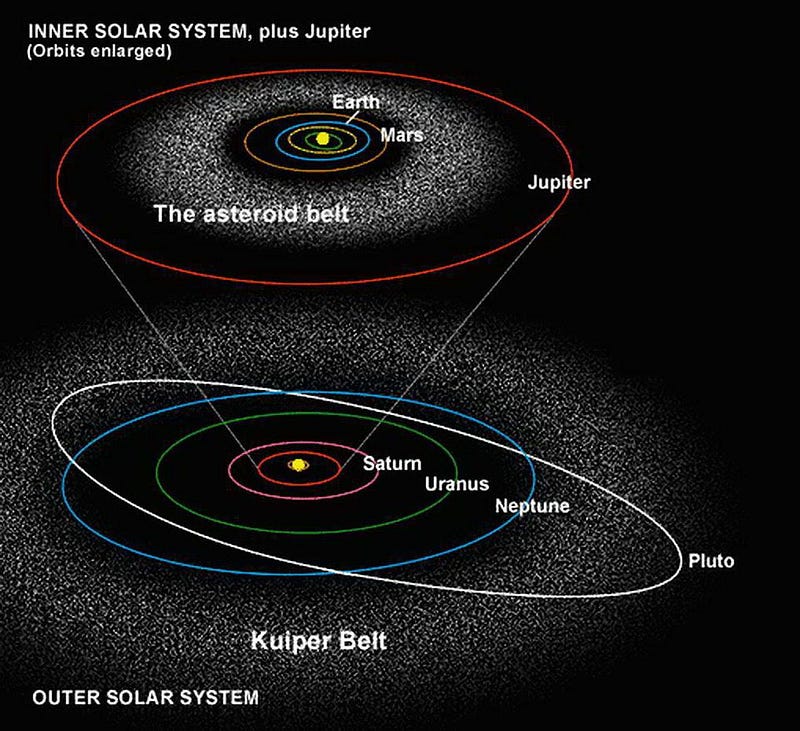
In other words, it must have an extra-solar origin. This object had to come from interstellar space: from another star system that likely ejected it an unknowably long time ago. According to our best theoretical models, there should be many billions of these objects, at least, for every single star in our own galaxy. It’s extraordinarily likely that many of these objects pass through our Solar System on an annual basis, but we’ve never detected them before.
Until ‘Oumuamua.

As it came through the Solar System, it passed interior to Mercury’s orbit: extremely close to the Sun. Because our telescopes rarely scan very close to the Sun, we didn’t actually discover it until it had crossed to the other side of Earth’s orbit, when it was already on its way out of the Solar System. We found it when it was at nearly its closest point to our world, at a distance of just 23 million km: around 60 times the Earth-Moon distance.
It was moving incredibly fast at closest approach, reaching a maximum speed of 88 km/s: about three times as great as the speed at which Earth orbits the Sun. And yet, for all of this, we were incredibly lucky to pull it out of the data. Once we had those initial indications of its existence, though — obtained from the Pan-STARRS survey — we had the opportunity to follow up those observations with a slew of large, powerful telescopes.
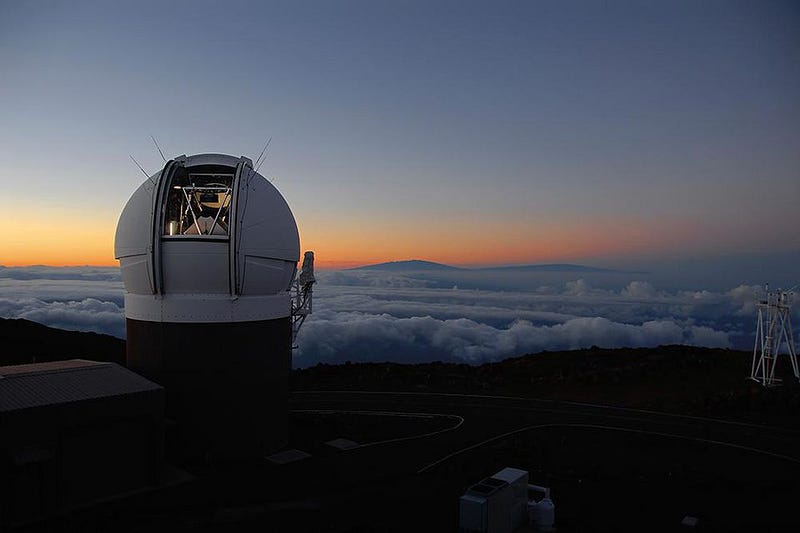
It was far redder in color than almost anything else we know of: most similar to the Trojan asteroids we see orbiting Jupiter. It has a different color from the true icy worlds we know of, including the centaurs, comets, and Kuiper belt objects we find in our own Solar System. But it was also incredibly boring in some sense, displaying no molecular, absorption, or emission features.
It was dark, it was red, and by combining that information with the brightness and distance measurements we took, astronomers could determine its size. It was smaller than practically every object we know of, at just around 100 meters in size. The observations indicate that there must have been practically no dust at all: at most there was a teaspoon’s worth of micron-sized (0.000001 meter) dust being emitted from its surface. ‘Oumuamua, whatever its origin was, was definitely not comet-like at all.

During the month of October, 2017, a series of telescopes observed its brightness and how it changed over time. Over a timescale of about 3.6 hours, its brightness varied in a periodic fashion by a factor of 15: an unheard-of large number for a comet or asteroid. The only explanation is that ‘Oumuamua must be an extremely elongated, rotating object. Without dust, outgassing, or some mechanism of obscuring the light from it, there must simply be some difference in size dependent on its orientation. When we see the “long” direction of ‘Oumuamua, we see it at its brightest; when we see its “short” direction, we see it at its faintest.
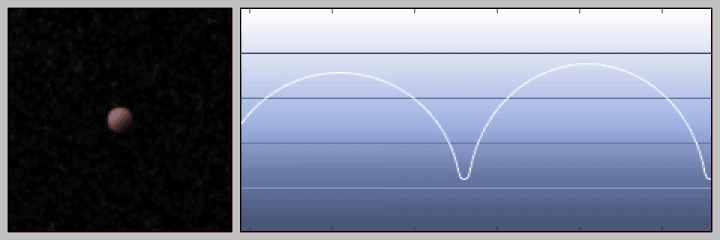
But then, things got weird. When we tracked out ‘Oumuamua’s path, we found that a normal, perfectly hyperbolic orbit didn’t quite fit well. There was an additional acceleration, as though something were pushing it, in addition to the influence of gravity. While some prominent advocates put forth extraordinarily wild explanations like aliens, that wasn’t what the data indicated.
We don’t need to resort to fantastic explanations when the mundane will do. Just because it didn’t have a coma — the most common feature of ice-and-rock worlds that heat up — doesn’t mean there couldn’t be some form of outgassing. At the small size and great distance of ‘Oumuamua, we could conclude it didn’t have a halo of gas around it, but we wouldn’t be able to detect a single, diffuse jet of ejecta.
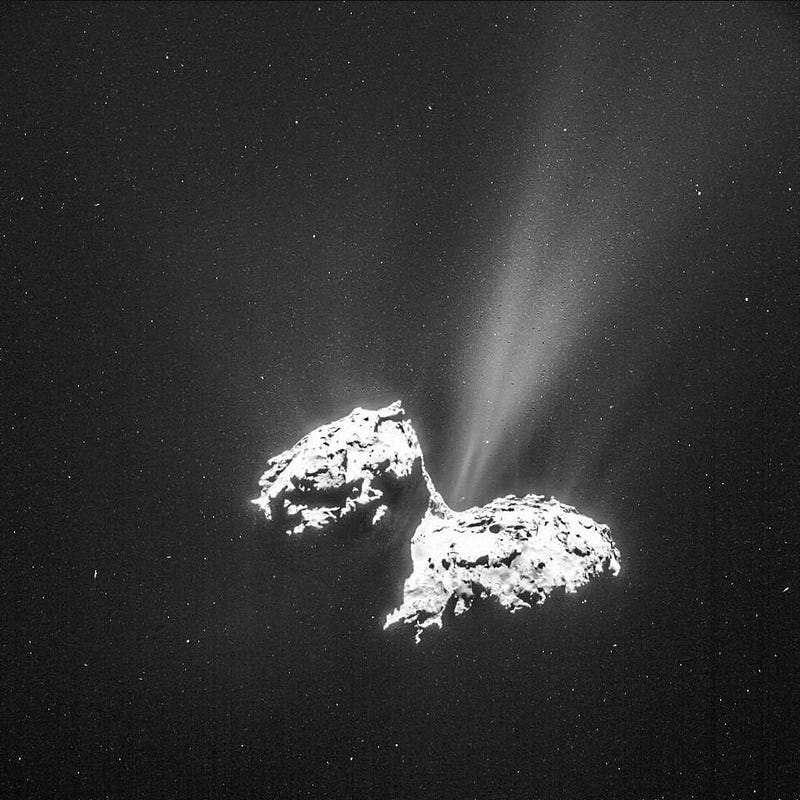
How could we bring all of this information together to make sense of it in a consistent fashion?
It’s possible, but requires a combination of factors we’ve never seen before. In particular:
- an outgassing jet, like we saw arising from the interior of Comet 67P/Churyumov–Gerasimenko,
- no coma, and hence a surface largely devoid of volatile ices,
- an origin from beyond the Solar System,
- and a body that doesn’t just rotate, but tumbles chaotically as it moves through the Solar System.
This is only possible if there’s a jet emerging from ‘Oumuamua, and the jet is off-center and off-axis from this spinning, tumbling interloper.

The incredible conclusion isn’t just that ‘Oumuamua came from outside of our Solar System, but that this was both rare and common. For an individual object, like ‘Oumuamua, it will likely never come this close to another Solar System again. Only once every 100 trillion years — some 10,000 times the current age of the Universe — will it pass so close to a star. As scientist Gregory Laughlin put it, “this was the time of ‘Oumuamua’s life.”
But for our Solar System, because of the sheer number of objects like this flying through the galaxy, we probably experience a close encounter like this around a few times per year. 2017 marked the first time we saw such an object, but we’ve likely gotten billions of them over the course of our Solar System’s lifetime. Some of them, if nature was kind, may have even collided with Earth.
There may be as many as ~10²⁵ objects like this flying through our galaxy. Every so often, we’ll get lucky enough to encounter one of them. For the first time, we’ve actually seen one for ourselves.
Ethan Siegel is the author of Beyond the Galaxy and Treknology. You can pre-order his third book, currently in development: the Encyclopaedia Cosmologica.





